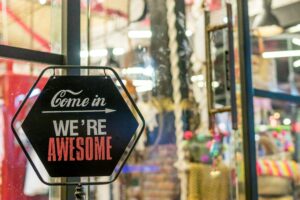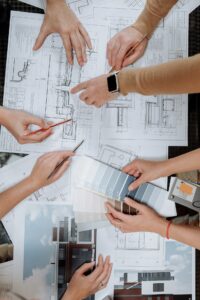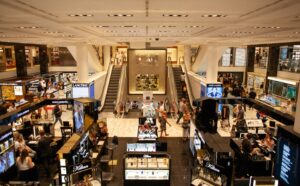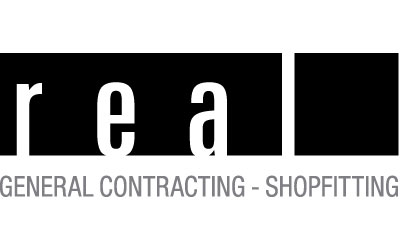 How do customers remember my store? That depends entirely on the store fitting. With a coherent basic concept and many small details, customers are emotionally touched and ultimately convinced. An efficient planning phase with a suitable construction partner is the cornerstone for success.
How do customers remember my store? That depends entirely on the store fitting. With a coherent basic concept and many small details, customers are emotionally touched and ultimately convinced. An efficient planning phase with a suitable construction partner is the cornerstone for success.
Store fitting storytelling
Diving into another world while shopping: stores that manage to blur reality and fiction leave a lasting impression on customers. To create a personal shopping world, a well-planned store fitting, also refered to as shop fitting, concept is necessary. However, a creative framework idea is not enough to create a theme-specific atmosphere. Every detail in the retail or service store must be adapted to a vision. Special furniture must be made, fixtures must be installed, and accessories must be purchased. Store operators can use banners, displays and interactive demonstration modules to connect their products with a story and emotionally enrich content. Colors play just as big a role as chosen designs. The overriding principle is to stand out from the crowd and thus attract attention.
The planning phase in store fitting
 Telling a story with store fittings is definitely tricky. To ensure that everything is perfectly coordinated, a professional planning process must take place. The store’s furnishings should reflect the business philosophy and tell a story, which requires a lot of detailed work.
Telling a story with store fittings is definitely tricky. To ensure that everything is perfectly coordinated, a professional planning process must take place. The store’s furnishings should reflect the business philosophy and tell a story, which requires a lot of detailed work.
Roughly, the planning process can be divided into five phases:
- Basic investigation: In the first stage of work, clarity must first be created about the specific task and the requirements. This requires a number of discussions and preliminary considerations.
- Preliminary planning: After the preliminary measures, the designers start to analyze the basics of the store in more detail, to obtain first permissions and to estimate the costs for the project. An evaluation of the space is also an integral part of this phase. In order to create accurate sketches later, it is important to measure all areas accurately.
- Draft planning: Now the production of a concrete concept stands, which already covers all necessary components. After requirements have been analyzed and all necessary research has been carried out, the planners create an overall sketch of the project. Based on this sketch, further negotiations with the client take place. Now concrete requirements can be clarified and exact cost calculations can be carried out.
- Approval planning: the best plan is of no use at all if legal regulations block the project. Therefore, all necessary permits must be obtained and legal conditions checked in this step.
- Implementation planning: this phase is the last step of the planning process. Here, working plans are drawn up on a larger scale and all the necessary information is finally obtained or determined.
It is important that the client is closely involved in the planning phase. On the one hand, the customer has important information and contributes his personal wishes. On the other hand, this ensures that too many spontaneous changes occur during the realization. Implementing these is expensive and time-consuming.
Important partners and players
With so many tasks and areas of responsibility, it is not surprising that the number of players involved is high. Architects and interior designers work closely with the client during the planning phase. Furniture suppliers and craftsmen then ultimately put the plans into action. Professional buyers may also be needed to take care of the procurement of equipment and furnishings.
Particularly in the Anglo-American world, the store fitter is also a profession in its own right. A professional Shop Fitter takes care of the planning, design, layout and installation of equipment and services. This is a very diverse profession that requires both expertise in the field of interior design and manual skills.
Convincing with suitable concepts
How can you tell whether an idea promises success as early as the planning process? Sample furniture and prototypes are well suited to testing both the design and functionality of the furnishings in advance. From the viewpoint of the observer, of course, because the customer must always be at the center of all decisions. After all, it is the customer who must be convinced in the end. And this is much easier with a design adapted to the target group and a clear navigation. Constantly changing products and the resulting requirements make it necessary to focus on adaptability and versatility. Another important point is the interaction between customers and products. Whether analog or digital, interaction leads to a story being told convincingly and the customer being fully involved.
Finding the best solution for each industry
What is a good store fitting concept? There’s no one-size-fits-all answer to that. Every industry has different requirements, which must be reflected by the store fitting. Clothing sells better in a color-matched environment, while for craftsmen the focus should be on stability and functionality. There are also purely practical points to consider. In supermarkets, for example, aisles must be wide enough for shopping carts.
Differences from tenant fit-out
Tenant fit-out is also concerned with the fit-out of retail space. However, there are some differences that should be kept in mind. While store fitting tries to make a store attractive with a compelling backstory, tenant fit-out involves fitting different vendors into an overall concept. To make rental spaces ready for occupancy, both interior design and construction measures may be necessary. The fundamental difference, then, is that store fitting is limited to one specific store, while tenant fit-out involves outfitting an entire building.
This is important when choosing a specialist

The store is the image of the whole company. Accordingly, it must fit the corporate values and principles. And even if unusual ideas can attract great attention, professionalism must not suffer from too much eccentricity. Just like the company, the store fitting must correspond to the industry. So it makes perfect sense to hire an industry-specific specialist.
In addition, the store fitting should be adapted to the times. Modern and digital components have long been part of common store fitting. Examples of this are digital cash registers, virtual shelves and so-called care wall mirrors in clothing stores. So you should look for a partner who has experience in dealing with phygital concepts so that automation, digitalization and process optimization do not become a problem.
Advantages of a General Contractor
Especially when implementing unusual ideas, it is important as a client to be kept up to date. Good advice and an efficient flow of information go hand in hand here. Individual solutions can only be implemented if the business partners are in constant exchange. Experience and references can be used as a guide. If you want to save time and money despite individuality, you can consider choosing a general contractor. In this case, all responsibilities lie with just one contact person.
Store fitting: A Summary
In order to convey a convincing story with store fitting, a great deal of planning is required. The concept must be worked out in detail so that it can be implemented efficiently by the multitude of players. Store Fitting concepts need to be up to date and adapted to the industry so that they not only stand out, but are also functional. Individual solution strategies are necessary for the store fitting concept to stand out from the crowd. But the effort is worth it. With the right partner at your side, the store will soon be attracting customers.
Further links
- https://www.definitions.net/definition/shop+fitting
- https://www.goconstruct.org/construction-careers/what-jobs-are-right-for-me/shopfitter/
Image Copyright: Thirdman, Pixabay, Tuur Tisseghem, Artem Beliaikin, ElasticComputeFarm

